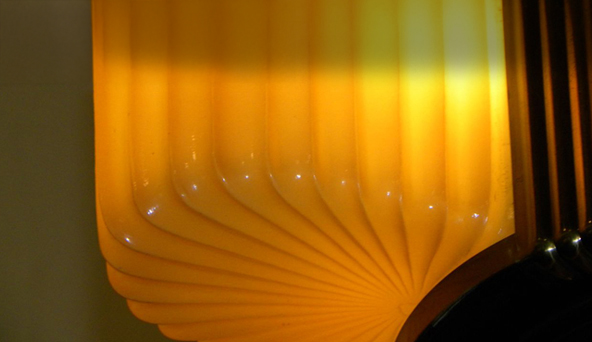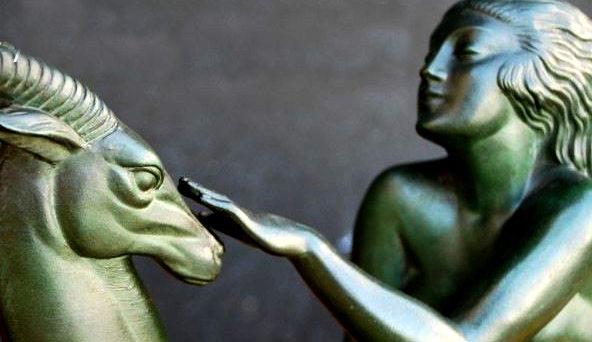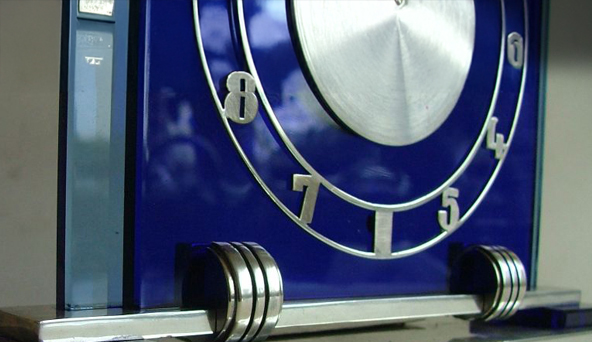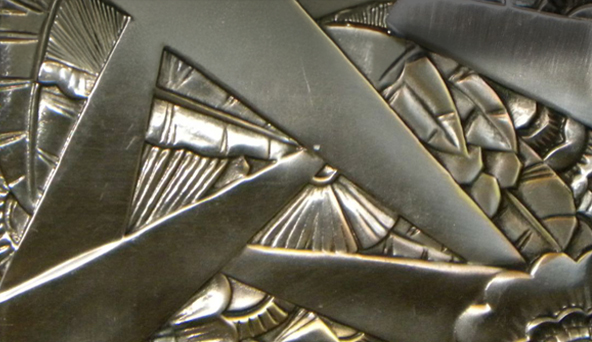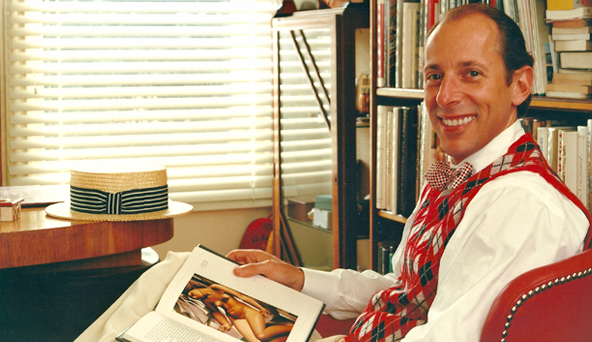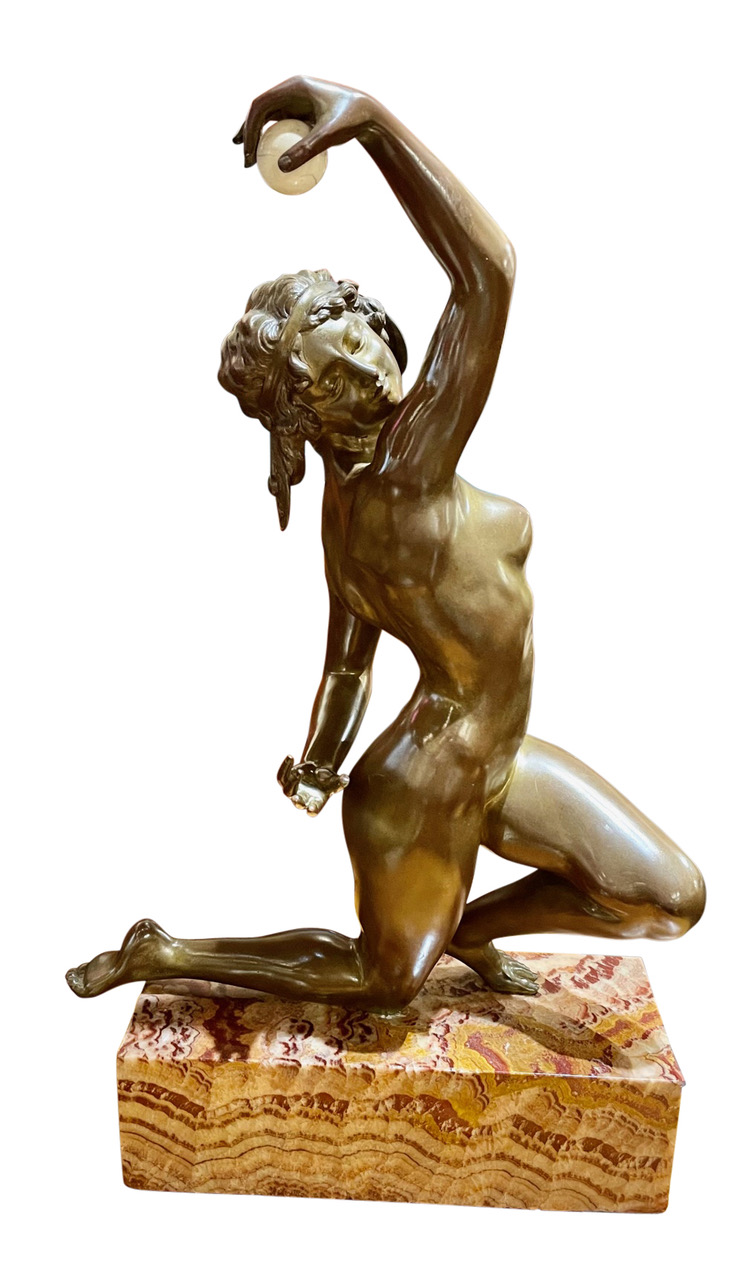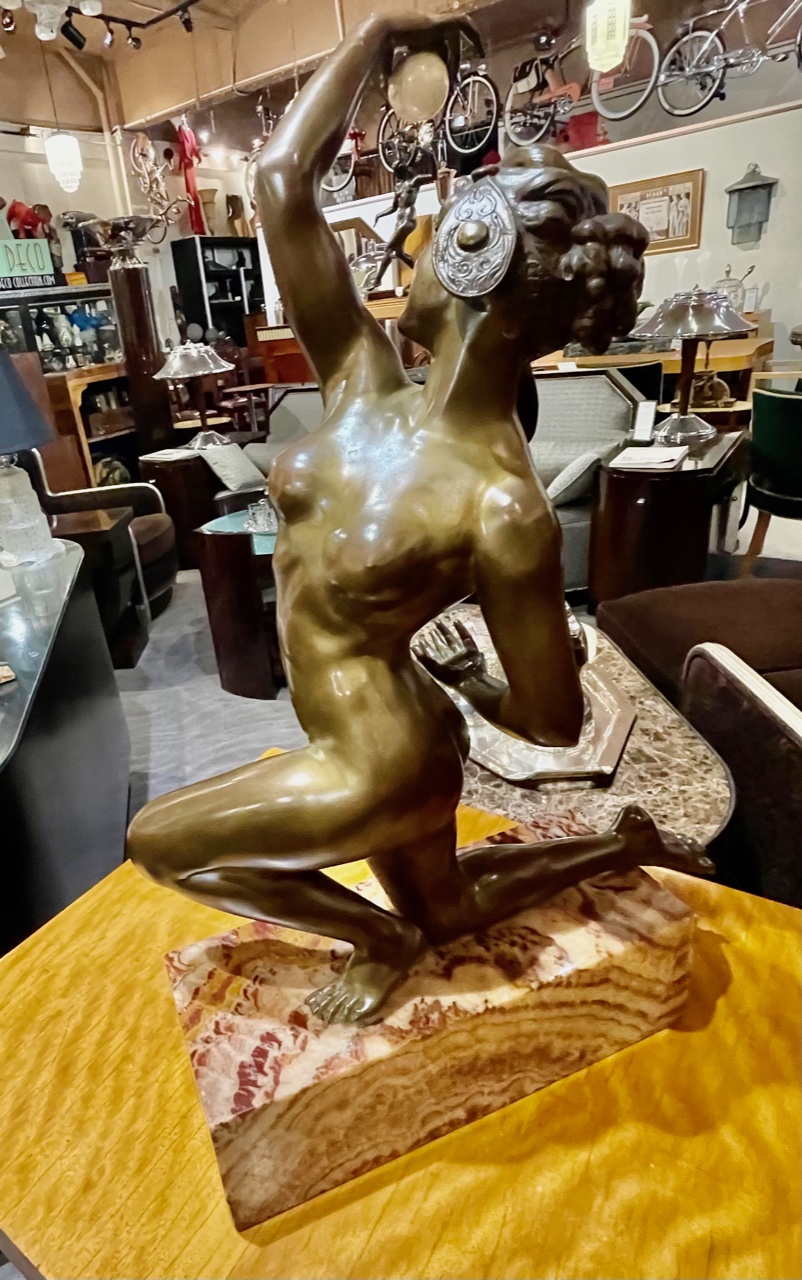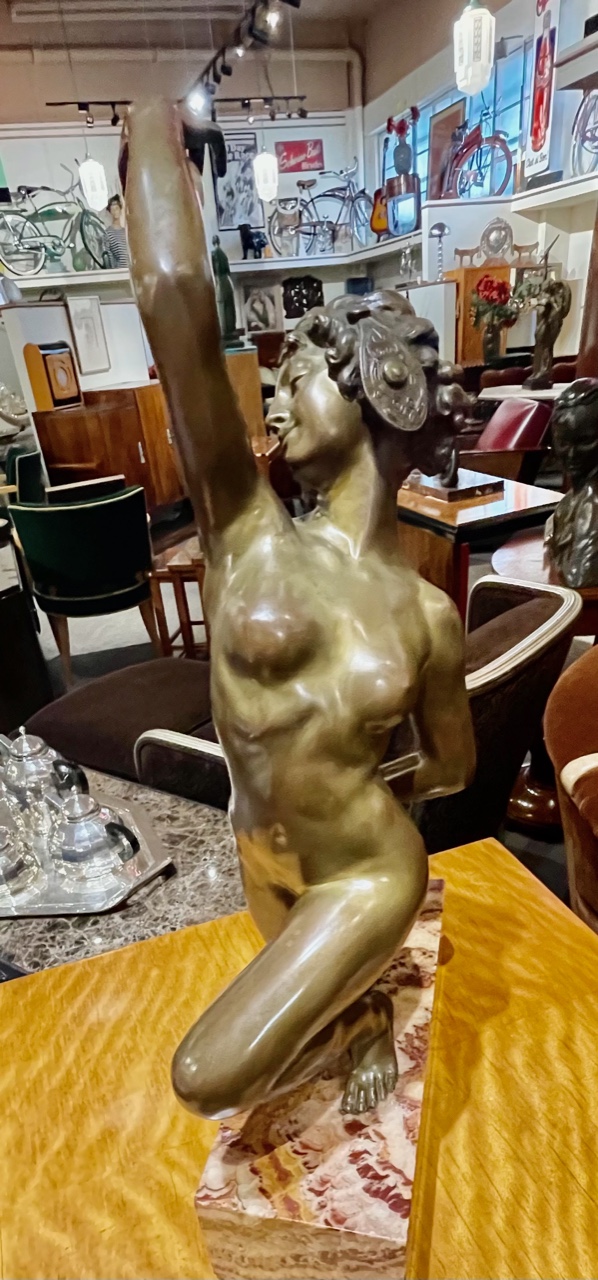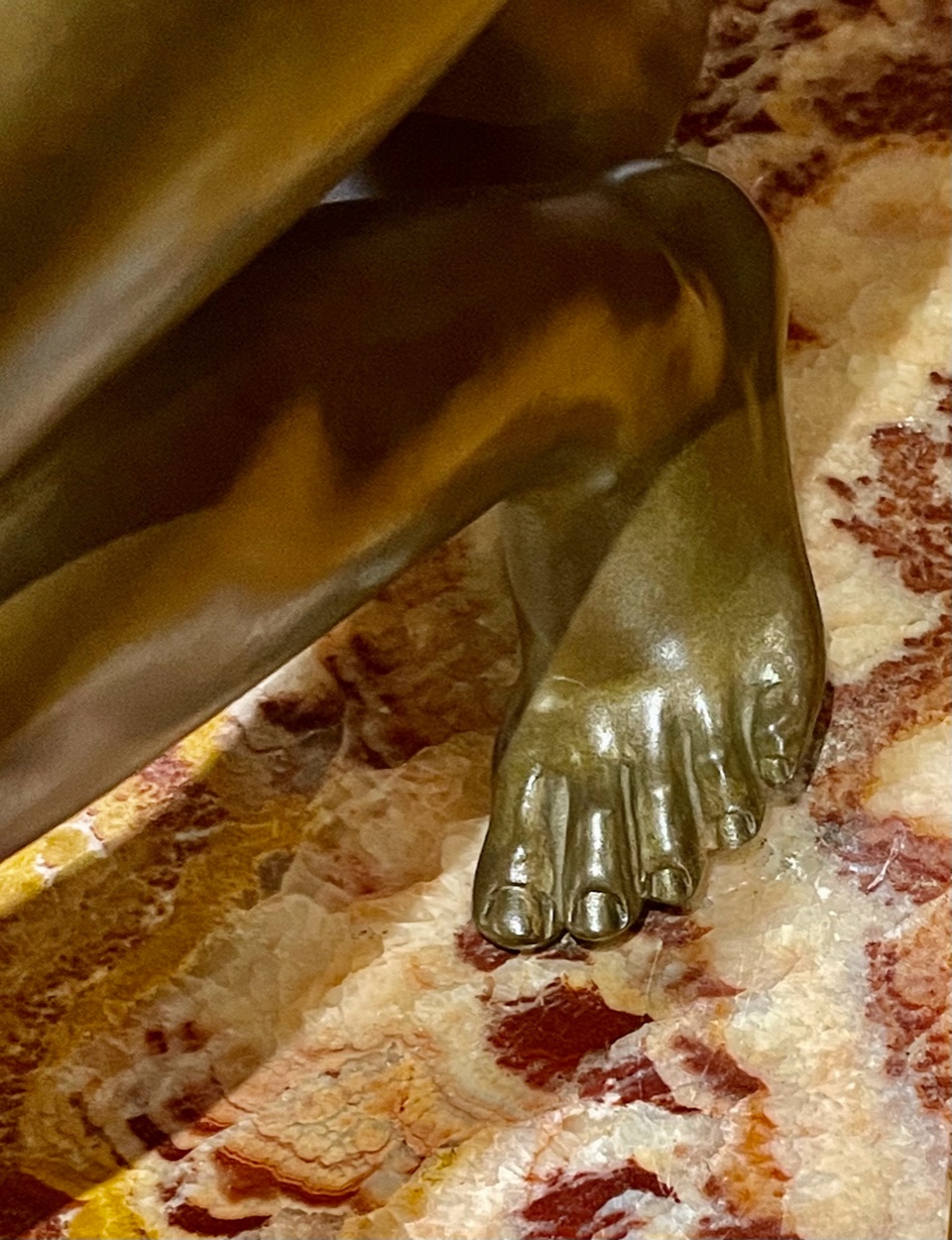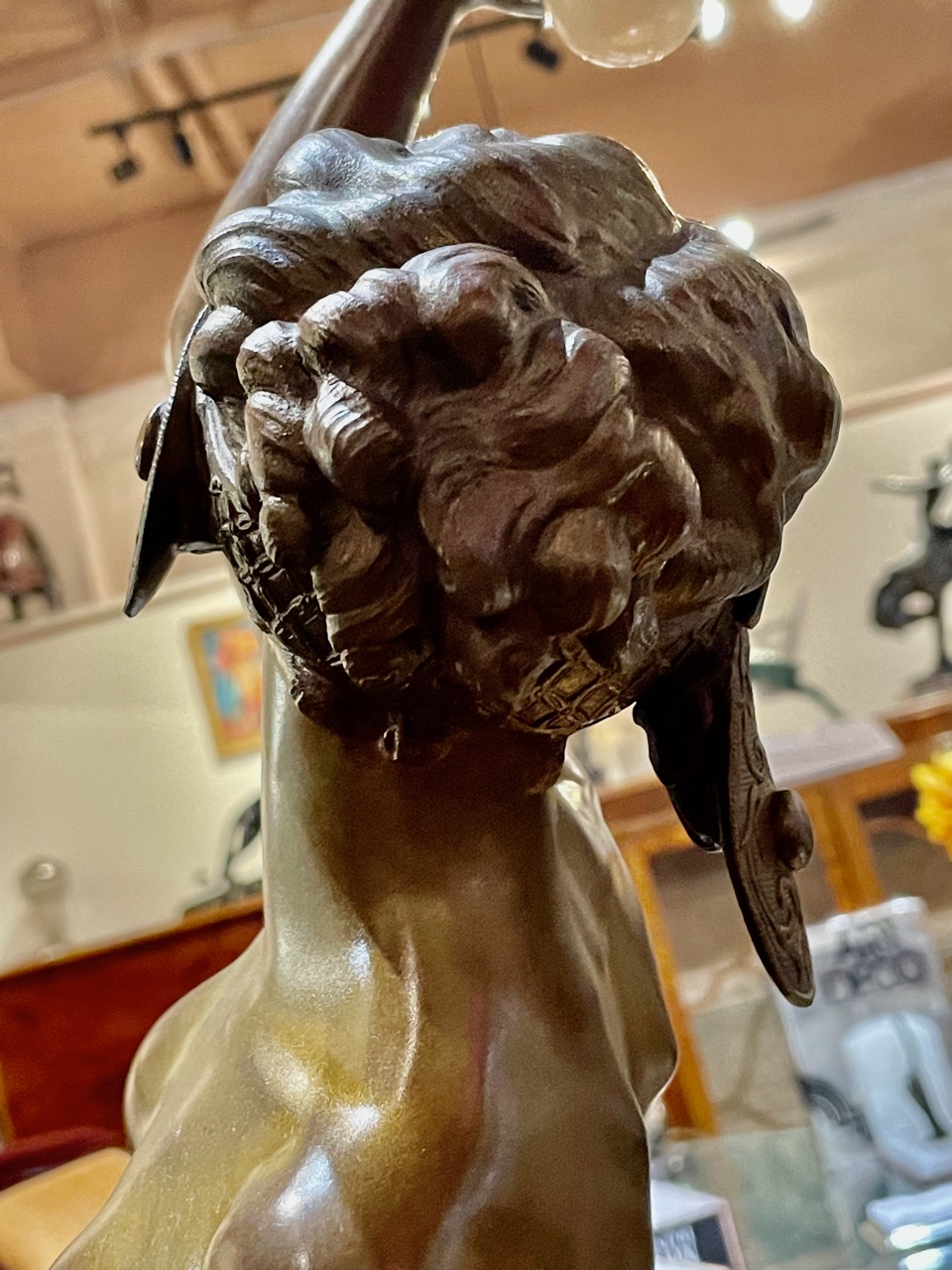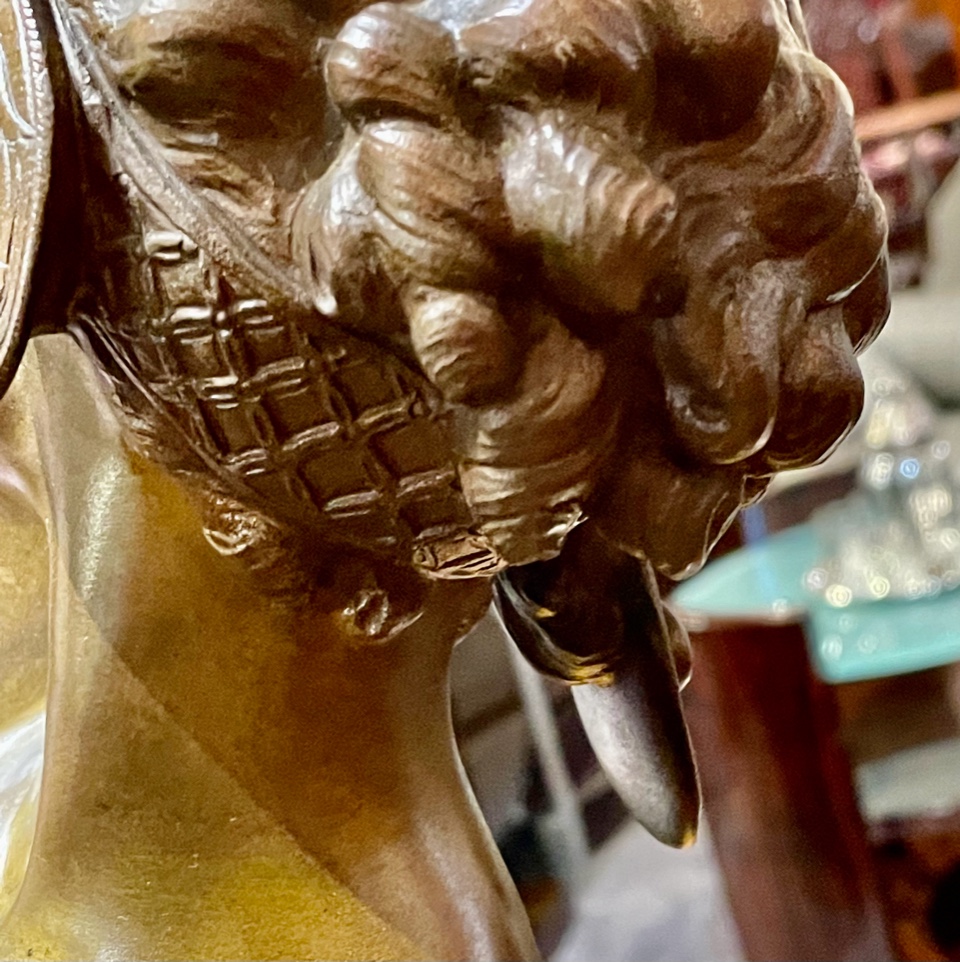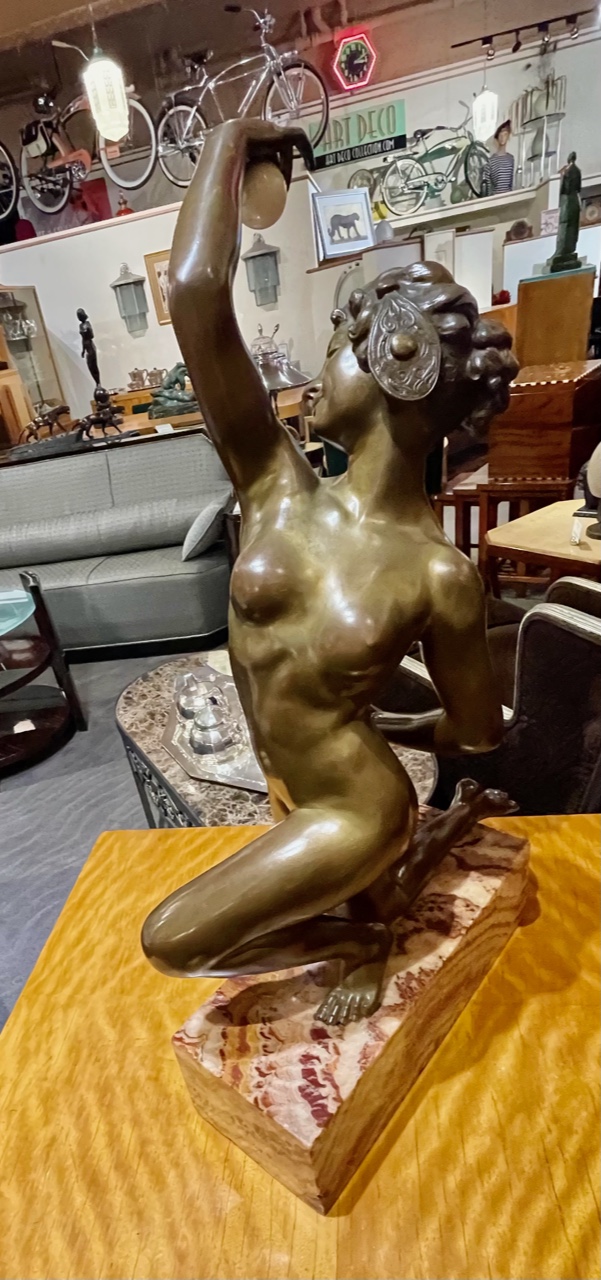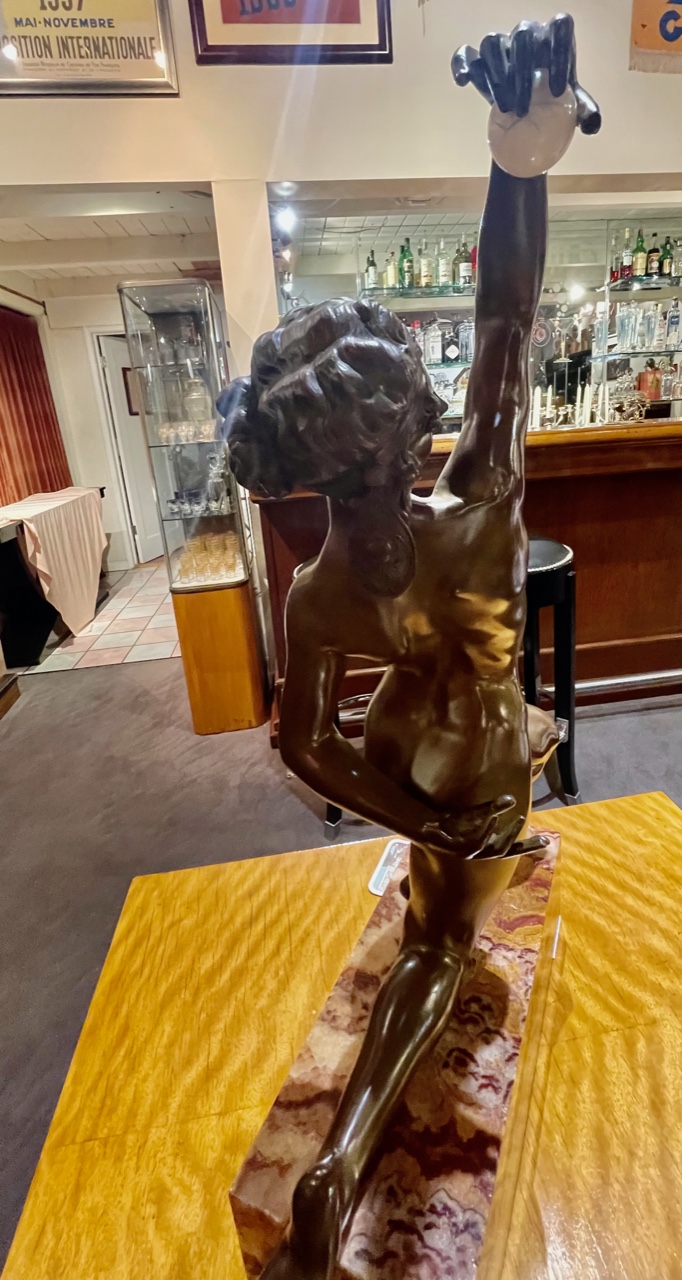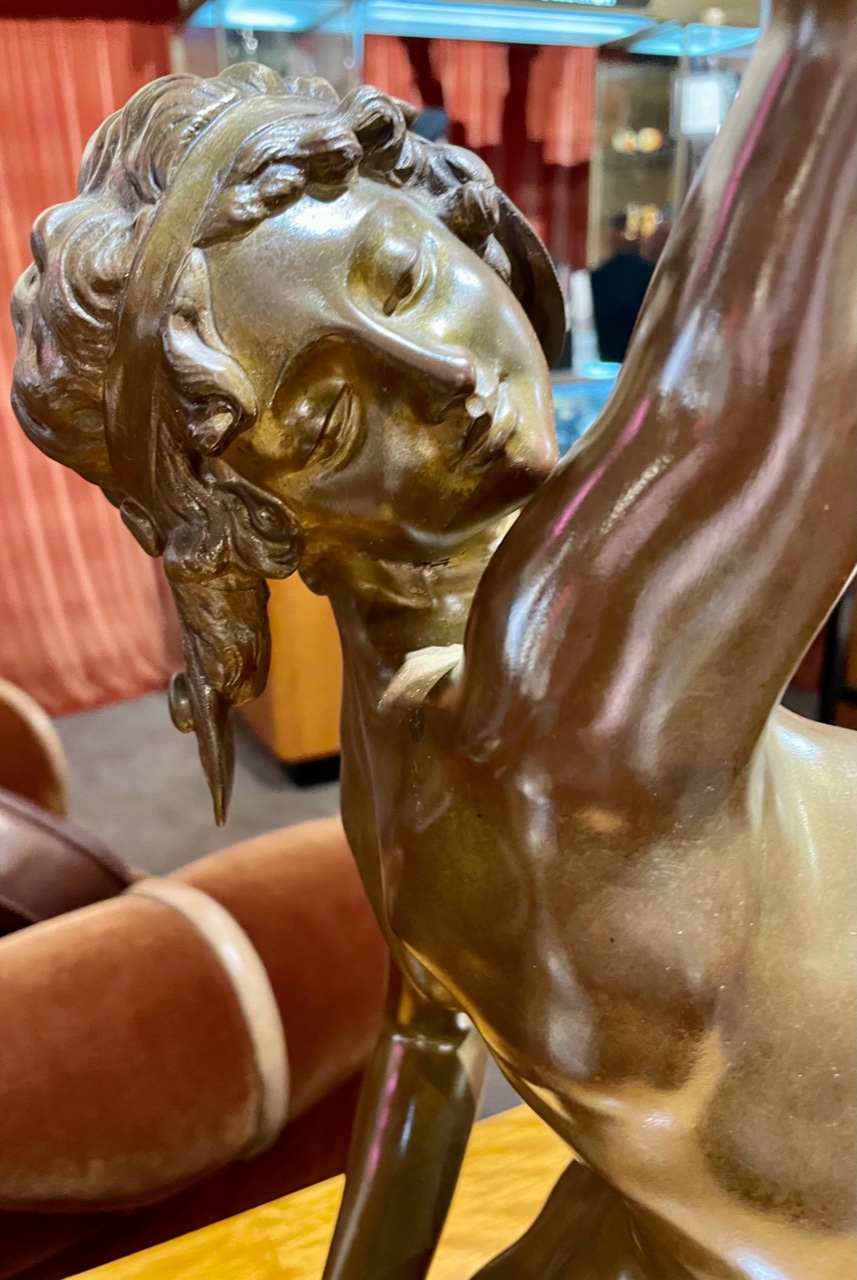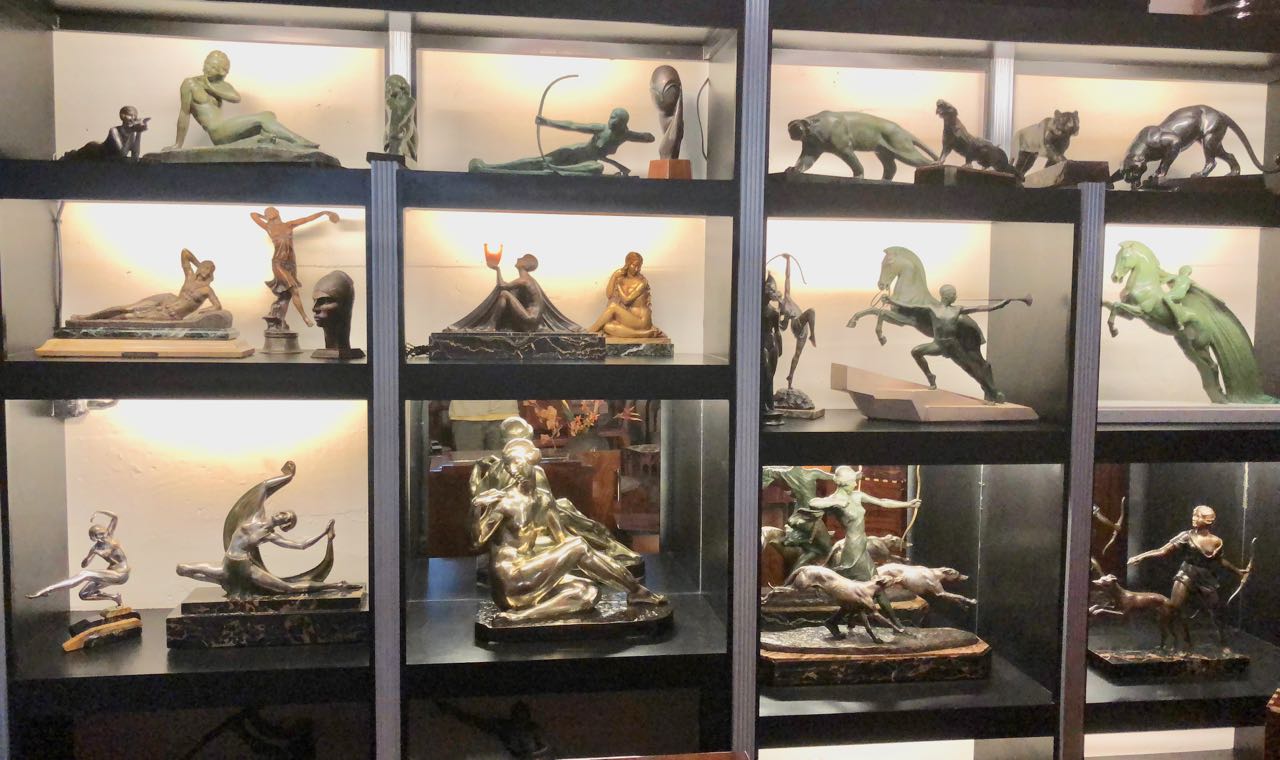Art & Statues
Art Deco Nude Bronze Sculpture by Affortunato Gory
Early Art Deco Bronze Nude Dancer Sculpture by Affortunato Gory
This exquisite bronze and alabaster sculpture of a nude dancer is an outstanding and rare example of early Art Deco artistry by Italian-born sculptor **Affortunato Gory**. Known for his mastery of form and texture, Gory was active from the late 19th century through his death in Paris in 1925. Though his exact birthdate remains undocumented, his artistic journey began in Florence, where he studied under Augusto Rivalta at the Accademia di Belle Arti. He later continued his training in France with Victorien-Antoine Bastet and became a frequent exhibitor at the Salon des Artistes Français.
This particular work exemplifies Gory’s command of the **chryselephantine technique**, a classical method first employed in ancient Greece that combines sculpted ivory, marble, or alabaster with bronze. In this case, the dancer holds an alabaster sphere aloft, complementing the bronze body with luminous contrast. The orb is removable for transport but serves as an ethereal focal point in the composition.
The dancer’s elegant pose employs the principle of contrapposto, where a subtle weight shift animates the figure with fluidity and grace. Her serene face, perfectly articulated hands and feet, and the elaborate headpiece all highlight the sculptor’s eye for precision and harmony. The flawless dark-gilt patina further enhances the delicate modeling and lends depth to the surface.
The sculpture rests on its **original marble base**, crafted from richly veined stone in shades no longer readily available. The base anchors the piece with weight and presence, while the artist’s signature, "A. Gory," is discreetly etched into the sole of her foot.
Affortunato Gory's influence in early 20th-century sculpture cannot be overstated. Unlike many artists who rose to prominence after the Exposition des Arts Décoratifs of 1925, Gory was already a mature and influential figure. His work preceded and inspired key names of the movement, including Max Le Verrier, Marcel Bouraine, Pierre Le Faguays, and Joe Descomps. Like his contemporary Demetre Chiparus, Gory began with traditional portraiture and busts in the 1890s, eventually evolving toward a distinctive modernist language featuring nudes, oriental dancers, and allegorical figures that bridged the Art Nouveau and Art Deco eras.
This sculpture represents not only Gory’s evolution but also a key moment in the transition from 19th-century academic realism to the emerging dynamism and elegance of the Art Deco style. A museum-worthy piece of decorative art, it will elevate any serious collection.
Keywords Affortunato Gory sculpture, Art Deco bronze nude, early 20th-century French sculpture, chryselephantine statue, alabaster and bronze dancer, contrapposto sculpture, marble base signed Gory, Salon des Artistes Francais, oriental dancer Art Deco, collectible bronze figure, Italian sculptor Art Deco, Art Nouveau to Art Deco transition, decorative arts sculpture.

